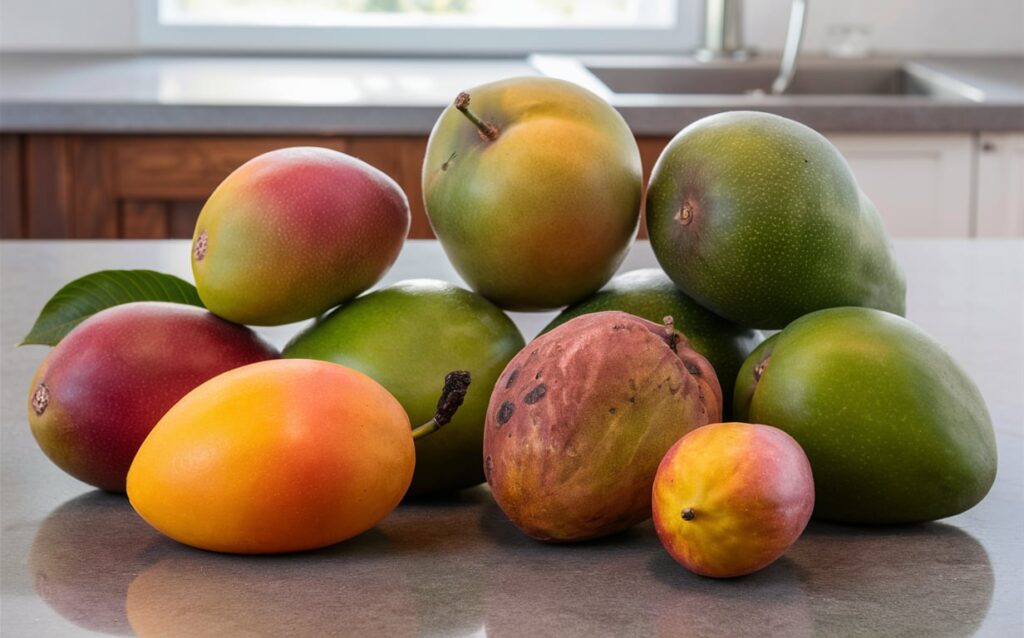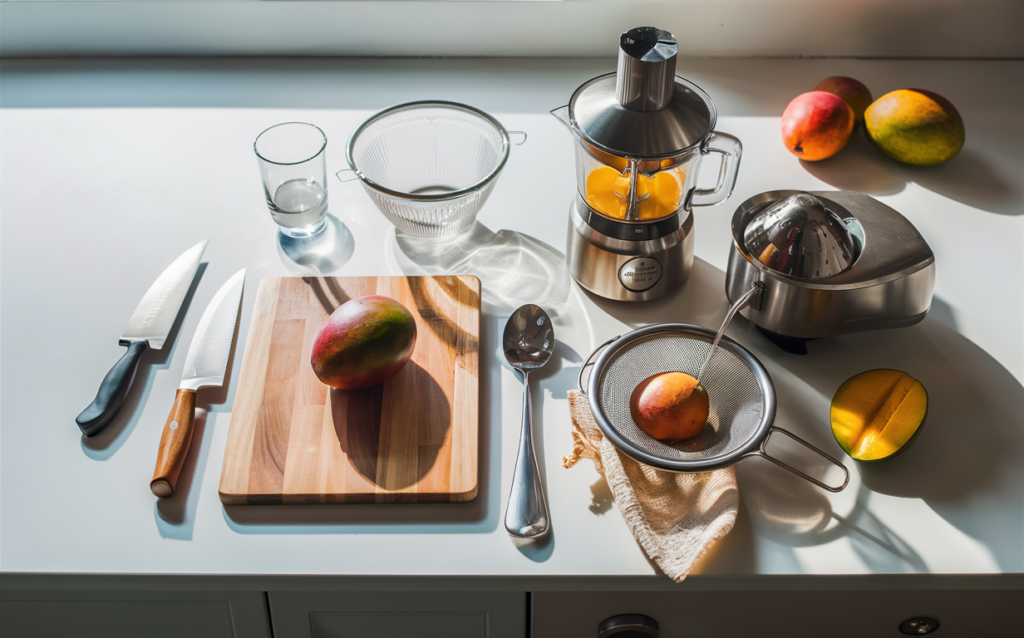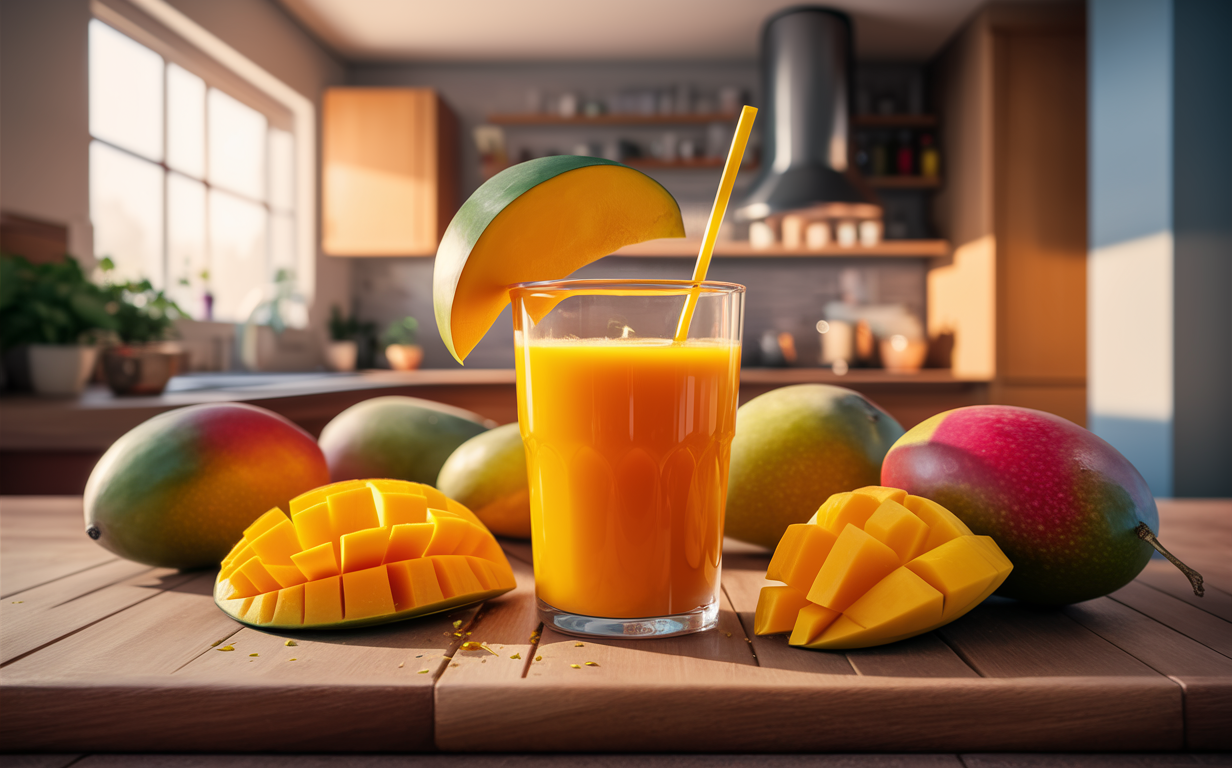Introduction
Are you looking for “How to Juice a Mango? Then you are in the right place. Let’s get started.Juicing a mango is a delightful way to enjoy the sweet and tropical flavor of this beloved fruit. Mango juice is not only delicious but also packed with vitamins and minerals, making it a popular choice for a refreshing and healthy beverage. In this guide, we’ll walk you through the steps to juice a mango effectively, ensuring you get the most out of this juicy fruit.
Choosing the Right Mango
Not all mangoes are created equal when it comes to juicing. For the best results, choose mango varieties that are known for their juiciness, such as Ataulfo, Haden, or Kent. When selecting mangoes, look for those that are slightly soft to the touch and have a sweet aroma. Avoid mangoes with wrinkles, dark spots, or a sour smell, as these may be overripe or spoiled.

Tools and Equipment Needed
Before you start juicing, gather the necessary tools:
- A sharp knife
- A cutting board
- A blender or juicer
- A fine mesh strainer or cheesecloth
- A receptacle or container to gather the juice
Optional equipment includes a citrus press or hand-squeezer for manual juicing.

Preparing the Mango
To begin, give the mango a good cleaning under running water to get rid of any dirt or pesticides.Next, use a knife to peel the mango. One effective method is to slice off the top and bottom, creating a flat surface. Stand the mango upright and carefully slice off the skin in vertical strips. Then, cut the mango flesh away from the pit in large sections.
Methods of Juicing a Mango
There are several methods you can use to juice a mango, depending on the tools you have available. The three most common methods are hand-squeezing, using a blender, and using a juicer.
Hand-Squeezing Method
- Cut the mango flesh into small pieces.
- Place the pieces in a bowl and use a fork to mash them into a pulp.
- Wrap the pulp in cheesecloth or place it in a fine mesh strainer over a bowl.
- Squeeze or press the pulp to extract the juice.
- Continue until you have extracted as much juice as possible.
Blender Method
- Mango flesh should be chopped into chunks and put in a blender.
- Pour in a tiny bit of water to aid in mixing.
- Blend until smooth.
- Pour the blended mango through a fine mesh strainer or cheesecloth to remove the pulp.
- If more juice is needed, use a spoon to press down on the pulp.
Juicer Method
- Cut the mango flesh into pieces that fit your juicer’s feeding chute.
- Feed the mango pieces into the juicer and collect the juice in the juicer’s container.
- Follow the juicer’s instructions for optimal results.
Straining the Juice
A crucial step in ensuring a smooth, pulp-free drink is straining the juice.Use a fine mesh strainer or cheesecloth to remove any remaining solids from the juice. This will give you a clear and smooth mango juice that is more enjoyable to drink.

Adding Flavor Enhancements
While mango juice is delicious on its own, you can enhance its flavor with natural sweeteners like honey or agave syrup. Adding a splash of lemon or lime juice can brighten the flavor, and herbs like mint or basil can add a refreshing twist. For a spiced version, try adding a pinch of cinnamon or ginger.
Serving Suggestions
Mango juice is best served chilled. Pour it over ice for a refreshing summer drink, or use it as a base for tropical cocktails. It pairs well with breakfast foods like pancakes and waffles, and can also be a great addition to smoothies and fruit salads.
Storing Mango Juice
To store mango juice, pour it into an airtight container and refrigerate. Freshly made mango juice is best consumed within 2-3 days. If you want to keep it longer, consider freezing the juice in ice cube trays for later use.

Health Benefits of Mango Juice
Mango juice is rich in vitamins A and C, which are essential for immune health and skin health. Antioxidants included in it also aid in preventing damage from free radicals.Drinking mango juice can aid in digestion, improve eye health, and provide a natural energy boost.
Mango Juice Recipes
Simple Mango Juice Recipe
- Ingredients:
- 2 ripe mangoes
- 1 cup water
- Sweetener to taste (optional)
- Instructions:
- Peel and chop the mangoes.
- Blend the mangoes with water until smooth.
- Strain the mixture to remove pulp.
- Add sweetener if desired and serve chilled.
Mango Juice Blend
- Ingredients:
- 1 ripe mango
- 1 orange
- 1 cup pineapple chunks
- 1 cup water
- Instructions:
- Peel and chop the mango and orange.
- Blend all ingredients until smooth.
- Strain if desired and serve chilled.
Conclusion
Mango juice is an easy and satisfying process that yields a tasty and nourishing beverage. Whether you choose to hand-squeeze, blend, or use a juicer, you’ll enjoy the fresh and vibrant flavor of homemade mango juice. Try it and enjoy the deliciousness of the tropics with each sip.
FAQs
How many mangoes are needed for a glass of juice?
Typically, you will need about 2-3 medium-sized mangoes to produce one glass of juice.
Can you juice unripe mangoes?
Juicing unripe mangoes is not recommended as they are less sweet and can be quite sour. Ripe mangoes yield the best juice.
What are the best mango varieties for juicing?
Ataulfo, Haden, and Kent mangoes are excellent choices for juicing due to their sweetness and juiciness.
How to prevent mango juice from turning brown?
Adding a small amount of lemon or lime juice to your mango juice can help prevent it from oxidizing and turning brown.
Is it better to juice or blend mangoes?
Blending mangoes is often preferred as it maximizes juice extraction and retains more of the fruit’s fiber. However, juicing can give you a smoother, pulp-free drink.

